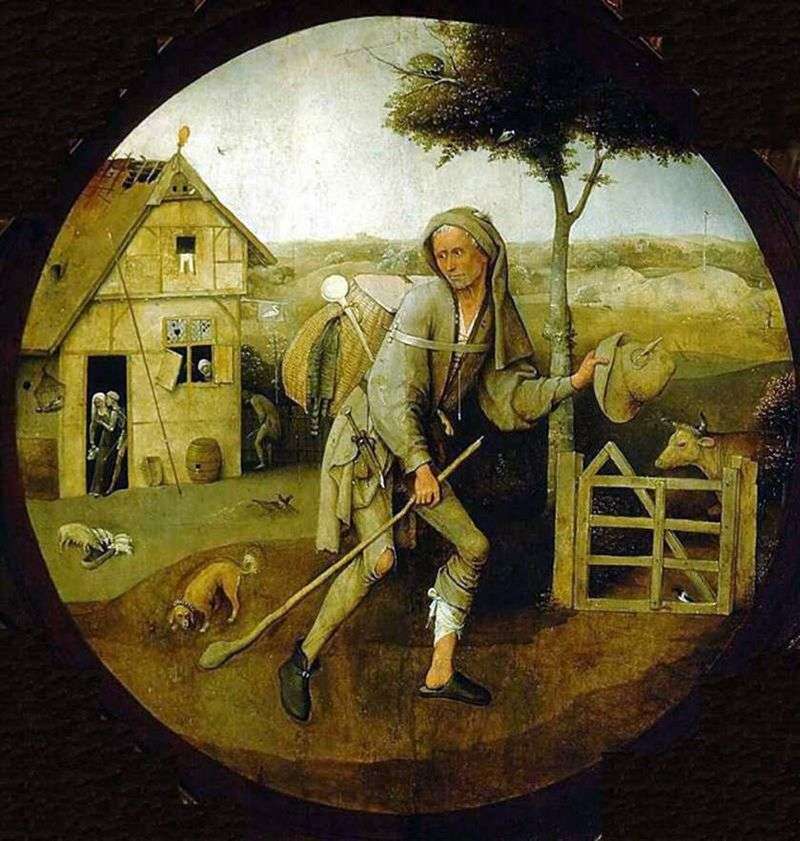
The painting marks the last stage in the artist’s work and is distinguished by a strict and balanced composition, a subtle nuance of the muffled and laconic range of colors. In the late Middle Ages it was believed that earthly life was a man’s journey from birth to death, and therefore the concept of a wanderer was of great importance in the Christian life. Allegorical images of the wanderer were carefully studied, the audience searched for hints of danger and temptation, what should be done in this life, and what is better to refuse.
The picture shows a marked similarity with the image on the outer doors of the triptych “Voz sena”. Even more emaciated and ragged wanderer is depicted against the backdrop of one of the most exquisite landscapes performed by the artist. The muffled yellowish-gray color subtly conveys the cloudy day, so characteristic of the rainy Holland. The picture reveals the pessimism of Bosch, who everywhere saw the dangers trapped by man. A wanderer on earthly life must overcome thousands of temptations and avoid treacherous traps.
With the exception of the dog, which must also be associated with slander, all other dangers lie in wait not for the flesh of man, but for his spirit. First of all, this is a dilapidated tavern on the left, embodying in itself the whole set of worldly temptations that the devil sends to people.
On the questionable nature of this institution can be judged by its visitors – on the right the man, walking away from the corner, celebrates the need; in the doorway the couple leads an amorous game; in the window with broken glasses and half-open shutters, one can see the head of a woman looking curiously outward. According to one version, concerning the plot of the picture, it is believed that the visitor, who is waiting for the woman, is the traveler himself, who, having passed the tavern on his way, has now stopped in thought, attracted by the pleasures that she promises.
The pilgrim’s clothing and all his road “accessories” symbolically explain his current lamentable appearance, the sinful inclinations that have brought the wanderer to this state, and his readiness to succumb to temptation. In comparison with the character of the triptych “Voz sen”, the spiritual state of the pilgrim was conveyed more specifically and directly: Bosch changed his gesture: if he fought off the dog on the triptych’s flaps, in the Rotterdam version he hesitated, half-turned to a tavern with an almost suffering face.
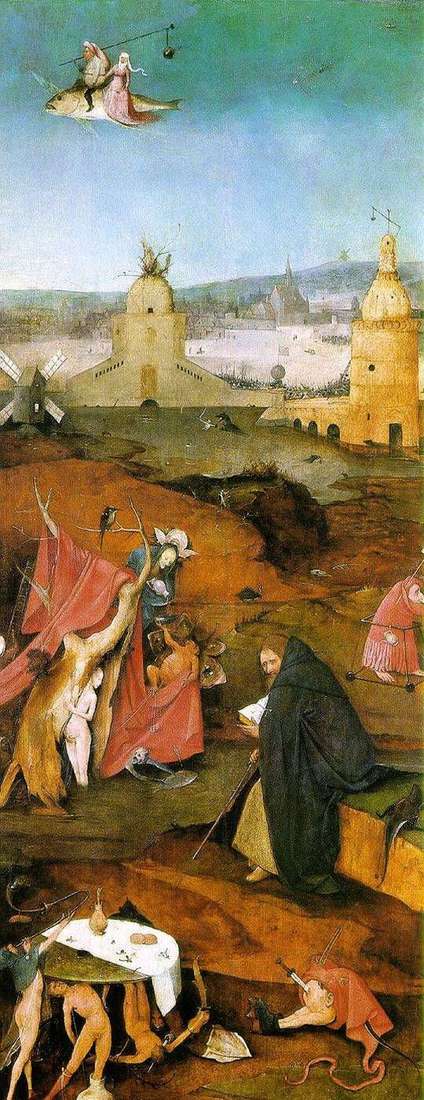 Visions of St. Anthony. The right wing of the altar by Hieronymus Bosch
Visions of St. Anthony. The right wing of the altar by Hieronymus Bosch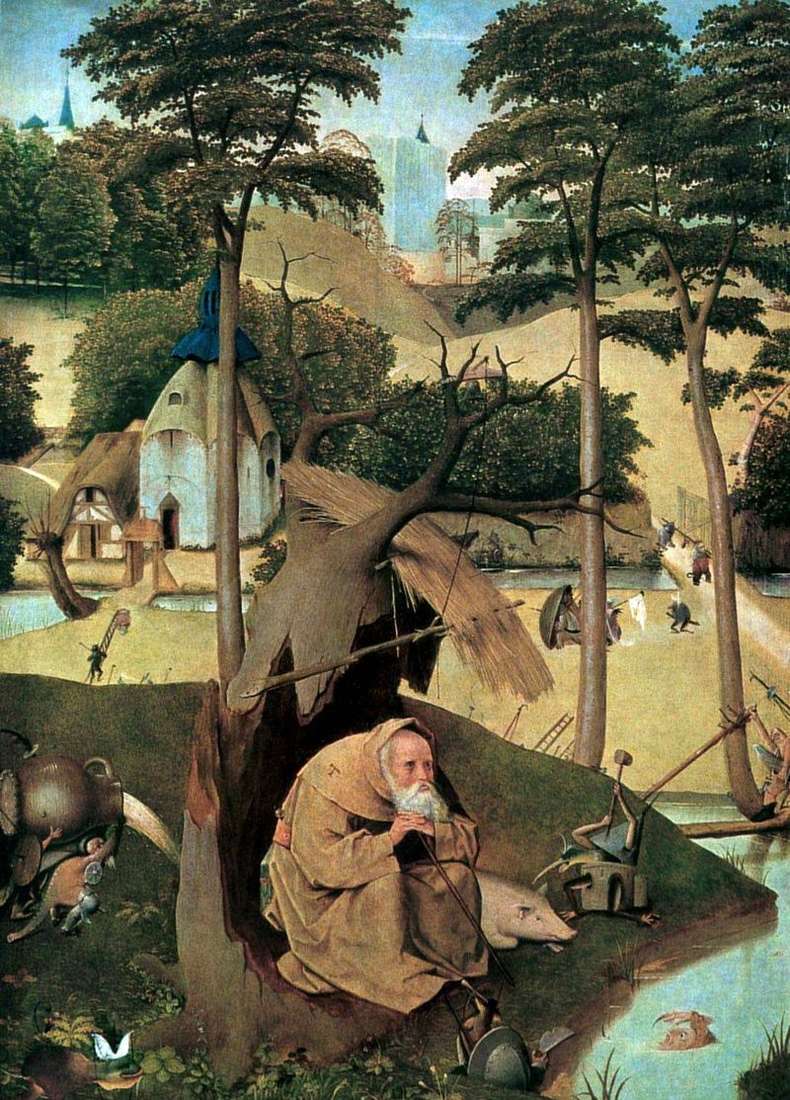 Saint Anthony by Hieronymus Bosch
Saint Anthony by Hieronymus Bosch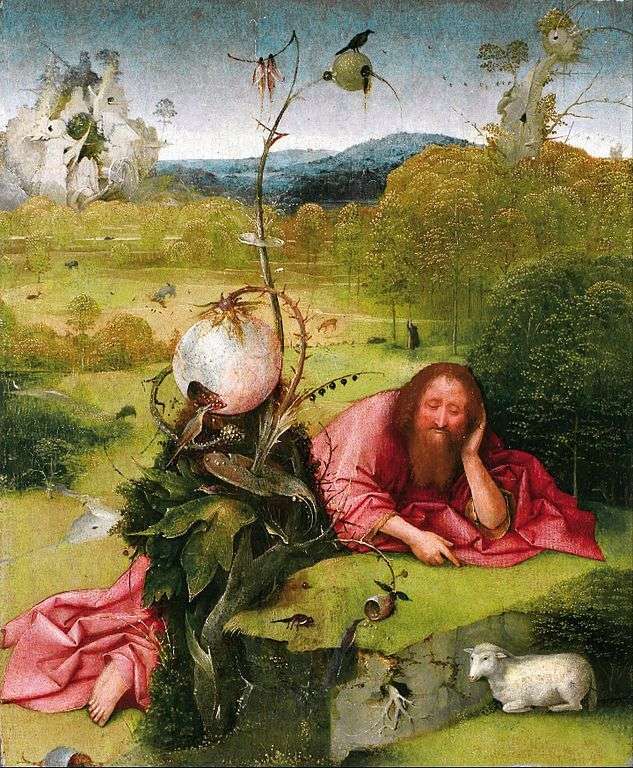 John the Baptist in the Wilderness by Hieronymus Bosch
John the Baptist in the Wilderness by Hieronymus Bosch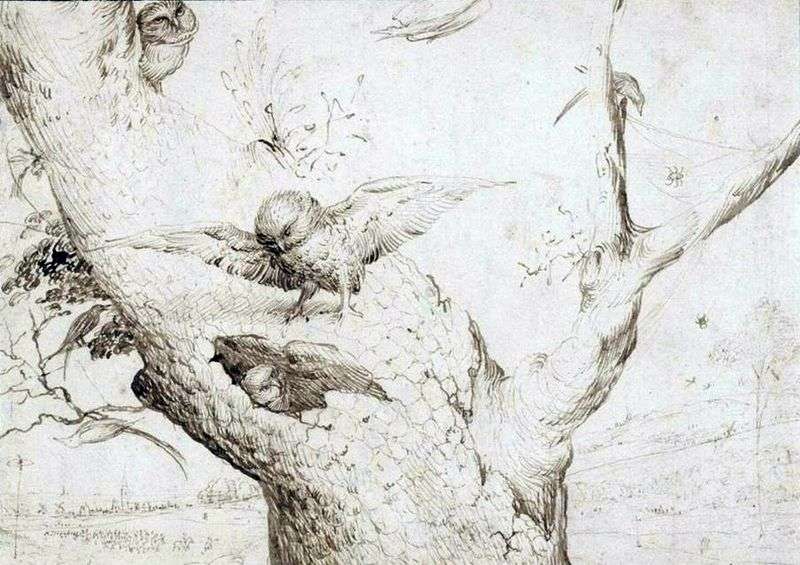 Nest of owls by Hieronymus Bosch
Nest of owls by Hieronymus Bosch The holy hermits. Triptych by Hieronymus Bosch
The holy hermits. Triptych by Hieronymus Bosch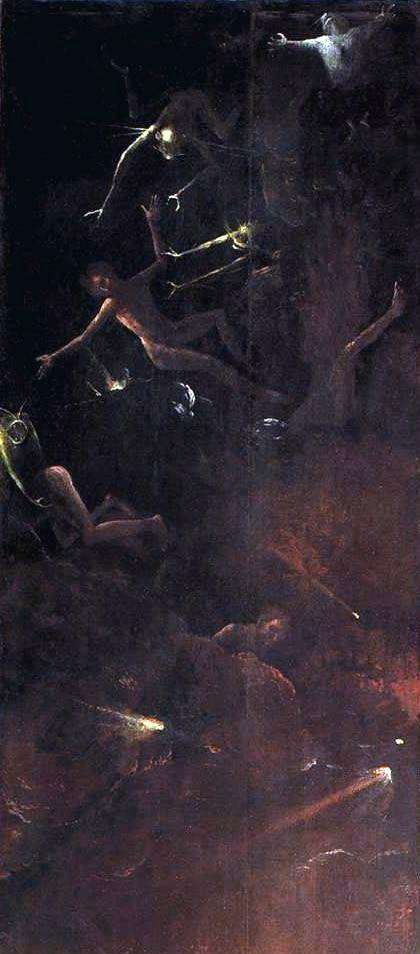 The overthrow of sinners, Visions of the Hereafter by Hieronymus Bosch
The overthrow of sinners, Visions of the Hereafter by Hieronymus Bosch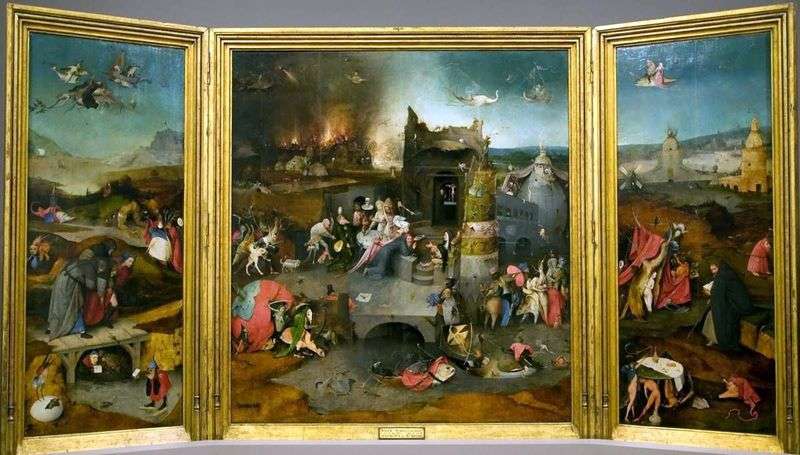 The Temptation of St. Anthony by Hieronymus Bosch
The Temptation of St. Anthony by Hieronymus Bosch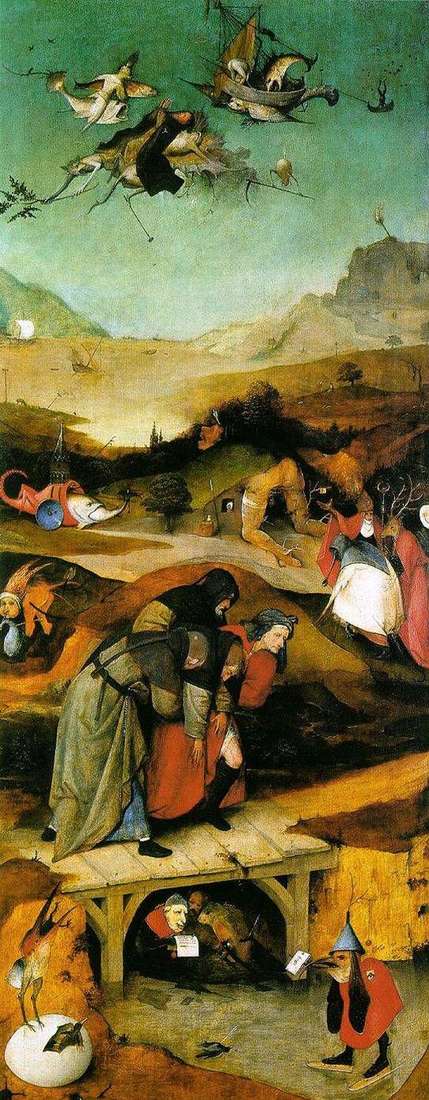 The flight and fall of Saint Anthony. The left wing of the triptych by Hieronymus Bosch
The flight and fall of Saint Anthony. The left wing of the triptych by Hieronymus Bosch